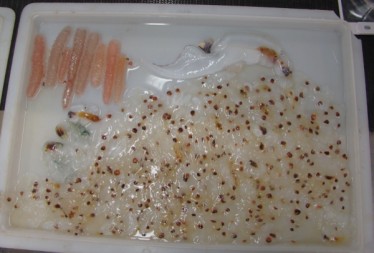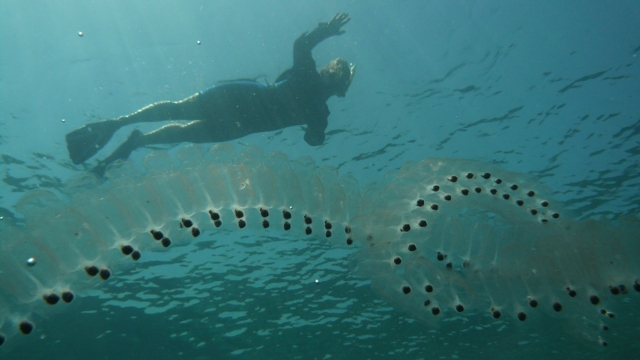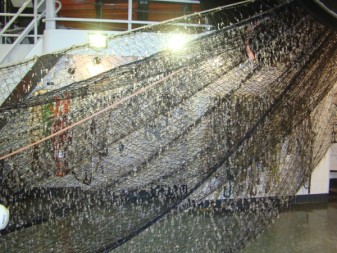What looks like a jellyfish but is closely related to humans? The answer is an oceanic animal called a salp, and right now the waters off California are teeming with unprecedented numbers of these creatures.
Salps are essentially transparent jet-propelled tubes. Their life cycle alternates between solitary swimmers, each smaller than your hand, and aggregated colonies that can grow longer than a bus.

As individuals, salps are innocuous. They don't sting. They don't hunt. They're gentle plankton eaters. But as populous blooms, salps can wreak havoc. So far this year their sheer gelatinous mass has shut down one nuclear power plant and destroyed two fishing nets.
The NOAA Southwest Fisheries Science Center in Santa Cruz has surveyed the central California coast every spring since 1983, gathering information on individual fished species and on the ecosystem in general. The 2012 survey took the ship Bell M. Shimada from San Diego to Newport between May 6 and June 17.
"We've had wild salp catches over the last few weeks," wrote research fishery biologist John Field in a message from the boat to colleagues back on shore. "No one from the survey has ever seen anything like it."

